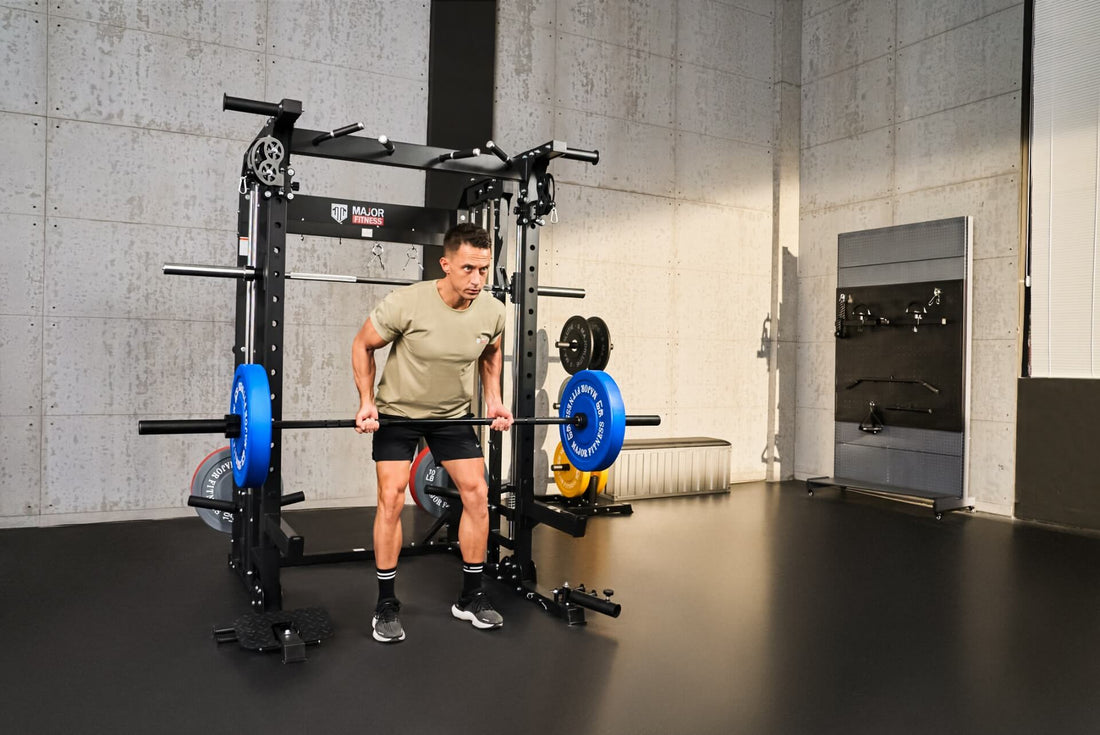
When it comes to building impressive biceps, the debate between cable curl vs barbell curl often takes center stage. Fitness enthusiasts, bodybuilders, and casual gym-goers alike have long discussed which of these exercises reigns supreme. But does one exercise truly outshine the other, or do both offer unique benefits that can help you achieve your muscle-building goals?
In this article, we'll explore the mechanics, benefits, and potential drawbacks of cable curls and barbell curls. By the end, you'll have a clear understanding of which exercise might be more suitable for your fitness routine, depending on your individual goals and needs.
The Fundamentals: What are Cable Curls and Barbell Curls?
To make an informed decision, it’s crucial to understand the basics of both exercises:
Cable Curls
Cable curls are performed using a cable machine. These machines use a system of pulleys to provide constant tension to the muscles throughout the exercise. Here's how you perform a standard cable curl:
- Attach a straight or EZ curl bar to the low pulley of a cable machine.
- Stand facing the machine, with your feet shoulder-width apart.
- Grasp the bar with an underhand grip (palms facing up) and curl the bar towards your shoulders by flexing your elbows.
- Lower the bar back down in a controlled manner to complete one repetition.
Barbell Curls
Barbell curls, on the other hand, involve lifting a barbell loaded with weights. Here's how to perform a barbell curl:
- Stand with your feet shoulder-width apart while holding a barbell with an underhand grip.
- Keep your upper arms stationary as you curl the barbell towards your shoulders.
- Lower the barbell back down to the starting position.
Mechanics and Muscle Activation
Understanding the mechanics behind each exercise can help you determine which might be better for your specific goals.
Cable Curl Mechanics
One of the primary benefits of cable curls is the consistent tension they provide. Because the resistance comes from the cable, your muscles are under constant stress throughout the entire range of motion. This can lead to increased muscle activation and hypertrophy (muscle growth).
Barbell Curl Mechanics
Barbell curls also offer significant benefits, including the ability to lift heavier weights. However, the resistance drops off slightly at the top of the movement, where your muscles are not fully engaged. This can sometimes make barbell curls less effective for continuous muscle tension when compared to cable curls.
Pros and Cons: Cable Curls vs Barbell Curls
Pros of Cable Curls
- Constant Tension: Continuous resistance helps in maximizing muscle activation.
- Versatility: Cables allow for a variety of grip types and positions.
- Safety: Reduced risk of injury due to controlled movements.
Cons of Cable Curls
- Availability: Requires access to a cable machine, which may not always be available.
- Load Limitation: Cables may not offer the same weight range as free weights.
Pros of Barbell Curls
- Strength Gains: Enables lifting heavier weights for building mass.
- Accessibility: Barbells are usually readily available in most gyms.
- Simplicity: Easy to set up and perform.
Cons of Barbell Curls
- Risk of Injury: Poor form or lifting too heavy can lead to injuries, particularly in the lower back and wrists.
- Form Dependency: Requires strict form to be effective and safe.
- Range of Motion: Slightly limited in providing continuous tension throughout the movement.

Specific Goals: What Are You Aiming For?
Your choice between cable curl vs barbell curl should depend largely on your fitness goals.
Strength Building
If your primary goal is to build raw strength and muscle mass, barbell curls may be more suitable due to their ability to handle heavier weights. Barbell curls engage not only the biceps but also other muscle groups, including the forearms and shoulders, which can aid in overall strength development.
Muscle Definition and Isolation
If your goal is muscle definition and hypertrophy, cable curls can be a better option. The continuous tension provided by the cable machine can aid in muscle isolation and can be particularly effective for targeting the peak of the biceps.
Practical Considerations: Accessibility and Convenience
Equipment
While both exercises require specific equipment, barbell curls can be performed with a simple barbell and some weights. Cable curls, however, require a cable machine, which might not be as easily accessible in all gyms.
Workout Space
Barbell curls generally require more space due to the length of the barbell, whereas cable curls can be performed in a more confined area. If you're working out in a crowded gym, cable curls might be more practical.
Combining Both for Optimal Results
Why choose just one? Incorporating both cable curls and barbell curls into your workout routine can offer the best of both worlds. You can start your workout with barbell curls to lift heavy and build strength, then switch to cable curls to fatigue the muscle with continuous tension.
Sample Workout Routine
Here’s a sample workout routine to incorporate both exercises:
- Warm-up: 5-10 minutes of light cardio and stretching.
- Barbell Curls: 3 sets of 8-10 reps (focus on lifting heavy).
- Cable Curls: 3 sets of 12-15 reps (focus on controlled movements and constant tension).
- Supplemental Exercises: Add in other bicep exercises like hammer curls or concentration curls.
- Cool Down: 5-10 minutes of stretching and foam rolling.
Conclusion
The debate between cable curl vs barbell curl is one that will likely continue, given the unique benefits each exercise offers. Whether you’re aiming to build strength, increase muscle definition, or simply mix up your workout routine, both cable curls and barbell curls can play a vital role in your fitness journey. Assess your individual goals, available equipment, and personal preferences to make the best choice for you.
In the end, the best strategy might be to incorporate both exercises into your regimen to achieve a well-rounded and effective bicep workout.
So, which one will you choose? The decision is yours!



















